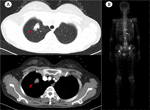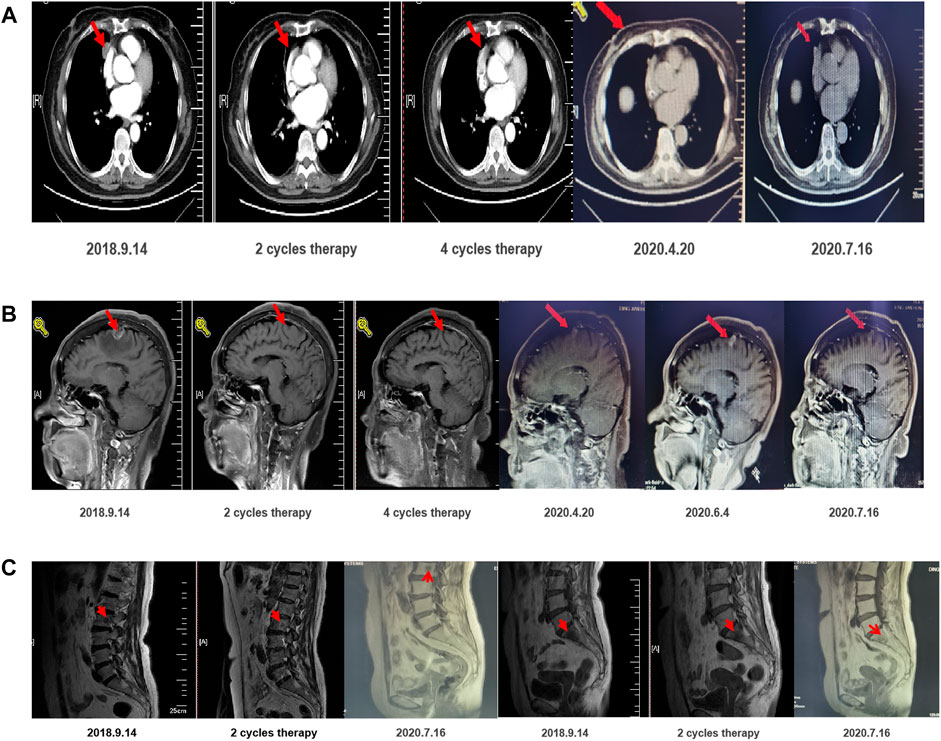Lung cancer remains a deadly disease worldwide, prompting the need for better understanding and advancements in treatment. Osimertinib, a groundbreaking drug, has emerged as a game-changer in lung cancer treatment, offering hope to patients and attracting investor interest.
This article explores the significance of early detection and treatment in lung cancer while highlighting the revolutionary benefits of osimertinib. We also delve into investment opportunities within pharmaceutical companies developing drugs like osimertinib.
Join us on an insightful journey into the world of investing and making a difference while potentially earning lucrative returns.
Lung cancer is responsible for approximately 1.76 million deaths annually, making it a major global health concern.
Osimertinib is a breakthrough drug that targets specific genetic mutations found in non-small cell lung cancers (NSCLC), demonstrating exceptional efficacy with minimal side effects.
Osimertinib inhibits the EGFR T790M mutation, blocking tumor growth signaling pathways. It significantly improves overall survival and delays disease progression compared to standard treatments.
Investors can consider supporting pharmaceutical companies involved in researching and developing targeted therapies for various types of cancer, including lung cancer.
Understanding Lung Cancer
Lung cancer is a malignant tumor originating in the lungs, often caused by long-term exposure to harmful substances like tobacco smoke or pollutants. It is a critical public health concern, leading to numerous cancer-related deaths worldwide. The two main types of lung cancer are non-small cell lung cancer (NSCLC) and small cell lung cancer (SCLC).
NSCLC is more common, accounting for about 85% of cases. Early detection through regular screenings such as LDCT scans plays a vital role in improving outcomes. Prompt diagnosis followed by tailored treatment strategies increases the chances of successful outcomes.
Treatment options include surgery, radiation therapy, chemotherapy, targeted therapy, and immunotherapy. By understanding lung cancer and its importance in early detection and treatment, we can make a significant impact on patient outcomes and public health overall.
Osimertinib: A Revolutionary Drug for Lung Cancer Treatment
Osimertinib, marketed as Tagrisso, is a groundbreaking targeted therapy drug that has transformed the treatment landscape for lung cancer patients. Specifically designed for individuals with EGFR T790M-positive NSCLC, it effectively inhibits tumor growth and spread by targeting mutated EGFR proteins.
Unlike traditional chemotherapy drugs, osimertinib minimizes damage to healthy tissues and offers renewed hope to patients facing acquired resistance. Its success stories and real-life examples demonstrate the life-saving potential of this revolutionary drug in lung cancer treatment.
The Development and Approval Process of Osimertinib
Osimertinib’s development involved rigorous testing, research, and clinical trials to ensure its safety and efficacy. Thousands of patients participated in these studies, demonstrating its effectiveness in treating advanced non-small cell lung cancer (NSCLC) with EGFR T790M mutations.
In 2015, the U.S. FDA granted accelerated approval for osimertinib, making it widely available as an alternative to traditional chemotherapy drugs for eligible patients globally. Its targeted approach and proven efficacy offer new hope for individuals facing advanced NSCLC with the EGFR T790M mutation.
Advantages and Benefits of Osimertinib over Traditional Treatments
Osimertinib, a targeted therapy for lung cancer, offers several advantages and benefits compared to traditional treatments such as chemotherapy. One significant advantage is its reduced toxicity profile, resulting in fewer side effects for patients.
Unlike chemotherapy drugs that often cause debilitating adverse effects like nausea, hair loss, and fatigue, osimertinib allows patients to maintain an enhanced quality of life during treatment.
Clinical trials have consistently demonstrated improved survival rates among patients treated with osimertinib when compared to conventional treatments. The targeted approach of osimertinib enables better disease control and increases the chances of achieving long-term remission.
This promising outcome provides hope for patients seeking effective treatment options that not only improve their chances of survival but also offer a higher quality of life throughout the treatment journey.
Another key benefit is the enhanced quality of life experienced by patients undergoing osimertinib treatment due to its targeted therapy approach. Not only does it improve survival rates, but it also offers symptom relief and prolonged periods without disease progression.
This means that patients can enjoy a better overall well-being while undergoing treatment.
In summary, osimertinib’s advantages over traditional treatments are evident in its reduced side effects, improved survival rates, and enhanced quality of life during treatment.
By minimizing toxicity and offering better disease control, this targeted therapy provides hope for lung cancer patients by not only increasing their chances of long-term remission but also allowing them to experience symptom relief and extended periods without disease progression.
Potential Risks and Limitations of Osimertinib
Osimertinib, a targeted therapy for non-small cell lung cancer (NSCLC), is generally well-tolerated. However, it does come with potential side effects such as diarrhea, skin rashes, and changes in heart function. Regular monitoring by healthcare professionals helps manage these risks effectively.
Resistance to osimertinib can develop over time, reducing its effectiveness in controlling tumor growth. Regular follow-up appointments and close monitoring are crucial to detect signs of resistance early on and adjust treatment strategies accordingly. Open communication with healthcare providers ensures the best possible outcomes for patients.
Investment Opportunities in Osimertinib’s Success
Investing in Healthcare and Biotech Industry
The healthcare and biotech industry presents a promising investment sector with immense potential. Constant innovation, increasing demand for medical advancements, and rising global healthcare expenditure contribute to the attractiveness of this industry for investors.
One of the key factors driving the growth potential within the healthcare sector is the advancements in drugs like osimertinib. These breakthrough medications exemplify the opportunities available in this industry.
As we witness a growing aging population and an increased focus on personalized medicine, investing in companies that drive medical breakthroughs can lead to substantial returns.
Breakthrough drugs such as osimertinib not only save lives but also attract significant attention from investors seeking potentially lucrative opportunities. The success of these drugs reflects positively on companies involved in their development, making them attractive investments within the healthcare industry.
Investing in the healthcare and biotech industry allows individuals to contribute to medical progress while potentially reaping financial rewards. Companies that successfully develop innovative treatments like osimertinib not only enhance patient care but also position themselves as leaders within the market.
Moreover, with ongoing research and development efforts, new breakthroughs are continuously being made in various therapeutic areas such as oncology, neurology, cardiology, and more. These advancements create further investment prospects within the healthcare and biotech industry.
[lyte id=’amEbIIwO1EM’]




